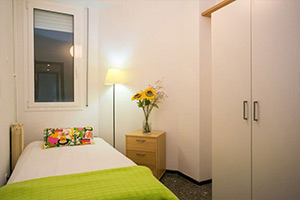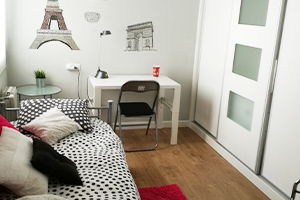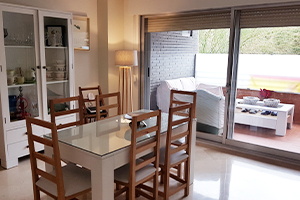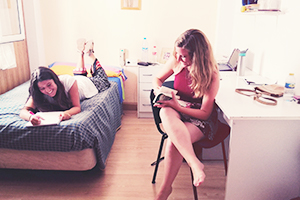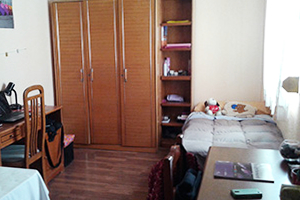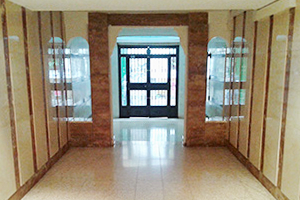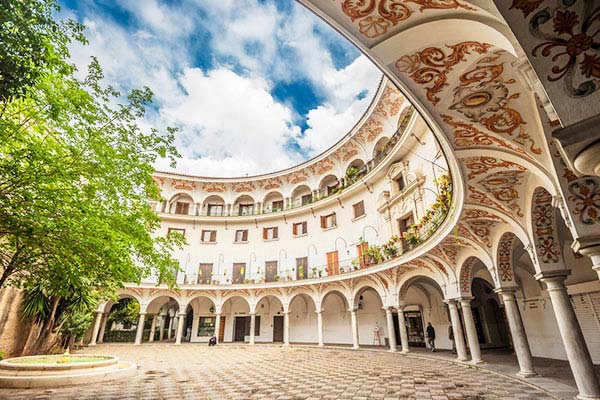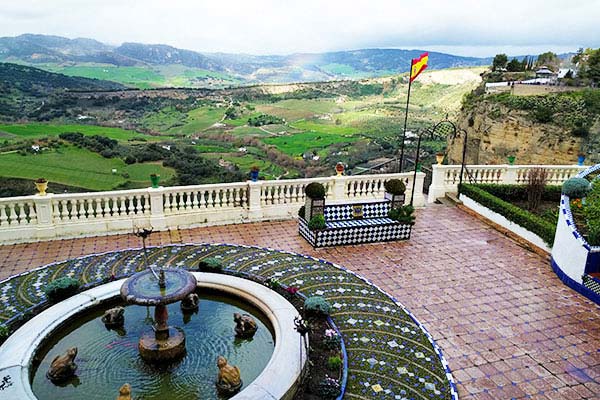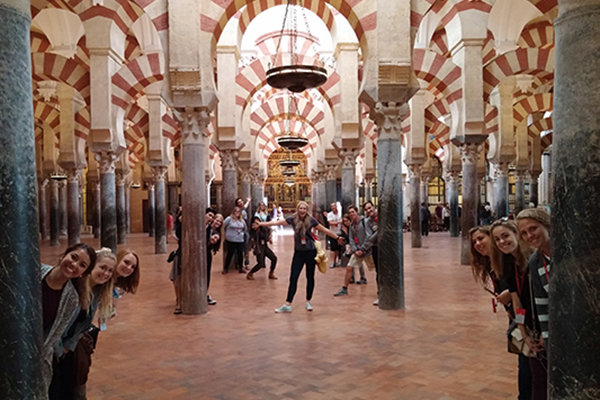
Arabic Cultural Studies in Granada
Granada, Spain
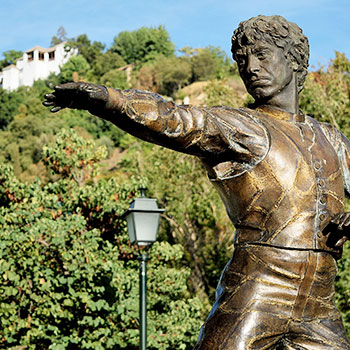
About the Program
Drawing on Granada’s unique multicultural history and southern European location, this program examines the city's Islamic legacy, established during 800 years of Muslim rule. Activities and excursions bring lessons learned in class to life, from a guided visit to the Albayzín neighborhood, to strolling the stunning grounds of the Alhambra at sunset, to taking a field trip to Morocco. Improve your language skills in Spanish and Arabic language courses (taught in Spanish) and choose from a range of electives that bring Andalusian and Islamic culture and history to life, offered in English or Spanish. You may choose to jump start your Spanish language ability with our Early Start option.
Program Notes
Requirements
Overview
Granada
8/30/23 - 12/22/23
$14,395
17 - 20
Deadlines
Closed
6/30/23
Requirements
Eligibility
High School Graduate
All Levels
2.5
Where You'll Study
Credits
Program Structure & Courses
Courses meet for a total of 45 contact hours/12-15 credits. You may earn 12-15 credits (up to 225 contact hours); if you choose the Early Start option, you may earn 16-20 credits (up to 305 contact hours).
Classes meet on Monday/Wednesday or Tuesday/Thursday; during the intensive language portion of the program, classes meet Monday-Friday. Active learning components required by your courses may be scheduled on Fridays.
Early Start: The Early Start course runs for 4 weeks/80 contacts hours in Fall and 3 weeks/60 contact hours in Spring; it’s designed to help you adjust to the university setting and prepare you for your courses. If you participate in the Early Start course you may earn an additional 4-5 semester credits (up to 80 contact hours).
Prior to departure, you will select your preferred courses. You'll take a language placement exam after you arrive in Granada. You will be enrolled into courses based on their availability. It is in your best interest to have multiple alternative courses approved by your home university prior to your departure due to course availabilities. To ensure that you receive credit for the language level you place into, have your home school pre-approve courses at several levels before you leave for Spain. Please consult with your academic advisor at your home university on credit pre-approval guidelines.
Beginner to Advanced Level Course Structure
Available Levels
Courses
The following courses have been confirmed for this term. Please note, the host institution reserves the right to cancel or change courses without prior notification.
*Courses with an asterisk indicate that the course has been associated with multiple subject areas.
Please click on the course title to view additional subject areas and detailed course information.
| Course Name | Level | Lang | Hours | Credits |
|---|---|---|---|---|
| Beginner Spanish | 100 | Sp | 80 | 5 |
| Elementary Spanish | 100 | Sp | 80 | 5 |
| High Intermediate Spanish | 300 | Sp | 80 | 5 |
| Intermediate Spanish | 200 | Sp | 80 | 5 |
| Lower Intermediate Spanish | 200 | Sp | 80 | 5 |
| Course Name | Level | Lang | Hours | Credits |
|---|---|---|---|---|
| Advanced Spanish Grammar | 300 | Sp | 45 | 3 |
| Advanced Speaking & Writing Skills | 300 | Sp | 45 | 3 |
| Elementary Spanish Grammar | 100 | Sp | 45 | 3 |
| Elementary Speaking & Writing Skills | 100 | Sp | 45 | 3 |
| High Intermediate Spanish Grammar | 300 | Sp | 45 | 3 |
| High Intermediate Spanish Speaking & Writing Skills | 300 | Sp | 45 | 3 |
| Intermediate Spanish Grammar | 200 | Sp | 45 | 3 |
| Intermediate Spanish Speaking & Writing Skills | 200 | Sp | 45 | 3 |
| Lower Intermediate Spanish Grammar | 200 | Sp | 45 | 3 |
| Lower Intermediate Spanish Speaking & Writing Skills | 200 | Sp | 45 | 3 |
| Course Name | Level | Lang | Hours | Credits |
|---|---|---|---|---|
| Advanced Arabic I | 400 | Ar | 45 | 3 |
| Beginner Arabic I | 100 | Ar | 45 | 3 |
| Elementary Arabic I | 200 | Ar | 45 | 3 |
| Intermediate Arabic I | 300 | Ar | 45 | 3 |
| Introduction to Arabic Language | 100 | Ar | 45 | 3 |
| Course Name | Level | Lang | Hours | Credits |
|---|---|---|---|---|
| History of Art in Spain | 300 | En | 45 | 3 |
| History of Art in Spain * | 300 | Sp | 45 | 3 |
| Course Name | Level | Lang | Hours | Credits |
|---|---|---|---|---|
| The Arab World and the West | 300 | En | 45 | 3 |
| Course Name | Level | Lang | Hours | Credits |
|---|---|---|---|---|
| History of Spain | 300 | En | 45 | 3 |
| History of Spain * | 300 | Sp | 45 | 3 |
| Course Name | Level | Lang | Hours | Credits |
|---|---|---|---|---|
| The Political System of Spain and the European Union * | 300 | En | 45 | 3 |
| The Political System of Spain and the European Union * | 300 | Sp | 45 | 3 |
| Course Name | Level | Lang | Hours | Credits |
|---|---|---|---|---|
| Islamic Culture in Spain * | 300 | En | 45 | 3 |
| Islamic Culture in Spain * | 300 | Sp | 45 | 3 |
| Spanish Civilization & Culture * | 300 | En | 45 | 3 |
| Spanish Civilization & Culture * | 300 | Sp | 45 | 3 |
| Course Name | Level | Lang | Hours | Credits |
|---|---|---|---|---|
| Traditional Song and Spanish Society: Flamenco, Folklore and Shephardic Songs | 300 | Sp | 45 | 3 |
Interested in taking your career to the next level?
Where You'll Stay
*Housing options may change and will be confirmed on the housing application form prior to the start of the term. Below are the housing options that have been offered in the past.
Excursions
Get out and explore! Excursions are offered for most semester, year, and summer programs. Semester students are typically offered between two to three excursions and summer study students are typically offered between one to two excursions. You'll receive a calendar of excursions during orientation; here are a few day and overnight excursions we've offered in the past.
What's Included in your Program
From housing to excursions, our programs include a variety of inclusions to enhance your study abroad experience! Here are examples that may be available in Granada. Inclusions vary by program – please contact our Enrollment and Advising team to find out what options are available for you.
- Personalized Pre-Departure Advising
- Visa & Immigration Advising
- Financial Advising
- Tuition and Registration
- Airport Pick-up
- Onsite Orientation
- City Tour
- Onsite Staff Support
- 24/7 Emergency Assistance
- Travel Medical Insurance
- International Emergency Service Support
- Welcome & Farewell Events
- Centrally Located Housing
- Wellness Activities
- Cultural Engagement
- Language Exchanges
- Volunteer Opportunities
- Excursions
- Host Institution Services & Amenities
- Career & Re-entry Workshop
- Official Transcript(s)
Sample Calendar
Below is a tentative itinerary for your program. Please note, dates and events below may change without prior notification. Contact CEA CAPA before purchasing airline tickets.
You will receive a finalized itinerary once you arrive onsite.
Note: Additional cultural activities/excursions or required course-related activities may be incorporated into your final itinerary. You are advised not to make personal travel arrangements until you have the final dates.
| Date | Description |
|---|---|
|
August 30
|
Arrival/Program Begins
Official Program Start Date. Students must arrive at the GRX airport on this date in order to be eligible for airport pickup. Students will then be transferred to their assigned housing. |
|
August 31
|
Orientation
Mandatory CEA Orientation will be held. |
|
September 01
|
Placement Exam
Placement Exam for UGR will be held on this day. |
|
September 04
|
Classes Begin
September classes begin at UGR on this day. |
|
September 05
|
Cultural Activity
Visit to the Arabic Granada. |
|
September 12
|
Orientation
Extracurricular orientation & Cultural Adaptation Seminar. |
|
September 19
|
Cultural Activity
Visit to the Jewish Granada. |
|
September 23
|
Excursion
CEA Daytrip to the Alpujarra. |
|
September 29
|
Classes End
This is the last day of September classes at UGR. |
|
October 02
|
Classes Begin
Semester classes begin at UGR on this day. |
|
October 06 - 08
|
Excursion
CEA International trip to Morocco. |
|
October 09 - 11
|
Cultural Activity
Belly dance workshop this week. |
|
October 12 - 13
|
Holiday
National day. No classes will be held. School & CEA Office will be closed. |
|
October 16 - 19
|
Cultural Activity
Churros con chocolate this week. |
|
October 20
|
Make-Up Class
Make-up class for Tuesday & Thursday schedules. |
|
October 23 - 26
|
Cultural Activity
Exclusive Activity for Arabic Cultural Studies in Granada Program this week. |
|
October 27
|
Make-Up Class
Make-up class for Monday & Wednesday schedules. |
|
November 01
|
Excursion
CEA Daytrip to Córdoba. |
|
November 01
|
Holiday
All Saints Day. No classes will be held. School & CEA office closed. |
|
November 06 - 09
|
Midterm Exams
Midterm exams will be held at UGR. |
|
November 10
|
Cultural Activity
Exclusive Activity for Arabic Cultural Studies in Granada Program. |
|
November 13 - 16
|
Cultural Activity
Flamenco dancing workshop this week. |
|
November 17 - 18
|
Excursion
CEA Overnight trip to Sevilla & Ronda. |
|
November 23
|
Cultural Activity
Thanksgiving event. |
|
November 24
|
Make-Up Class
Make-up class for Monday & Wednesday schedules. |
|
November 27 - 30
|
Cultural Activity
Exclusive Activity for Arabic Cultural Studies in Granada Program this week. |
|
December 06
|
Holiday
Constitution Day. No classes will be held. School & CEA office closed. |
|
December 08
|
Holiday
Immaculate Conception Day. No classes will be held. School & CEA office closed. |
|
December 14
|
Farewell Reception
CEA Farewell Reception will be held. |
|
December 18 - 21
|
Final Exams
Final exams will be held at UGR this week. |
|
December 22
|
Program Ends/Move-Out
Official Program End Date. Students must move out of housing no later than this day at noon. |
Sample Budget
This budget contains costs that you can take to your financial aid office. Please note that amounts may fluctuate; we've included a range of costs.
Federal law allows the use of financial aid to cover "reasonable" costs of study abroad including round-trip transportation, tuition and fees for the program, living costs, passport and visa fees, health insurance, and more.
Please note that all costs and charges listed below are subject to change without notice. With the exception of Program Price, all costs are estimates and may vary.
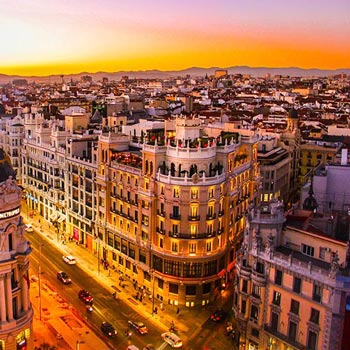
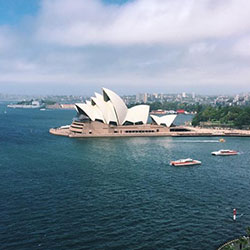
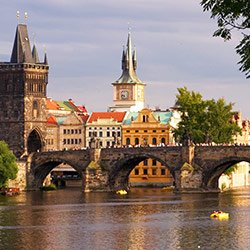
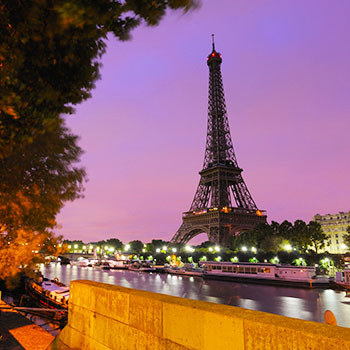
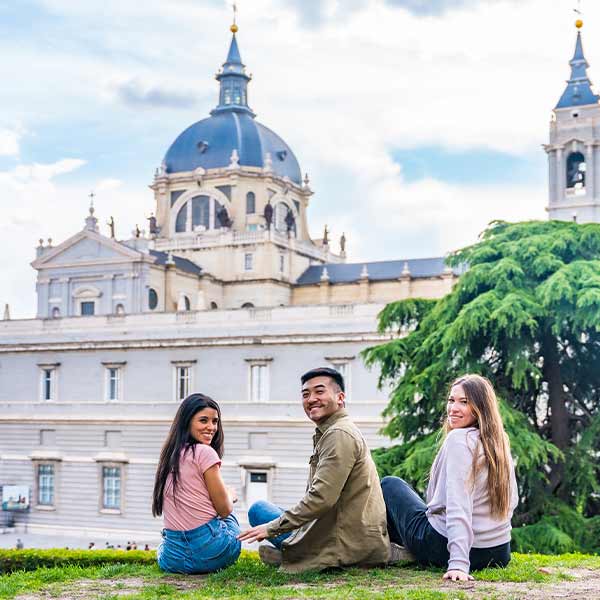
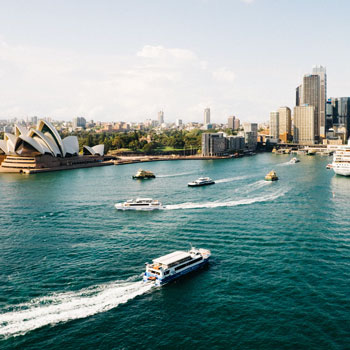










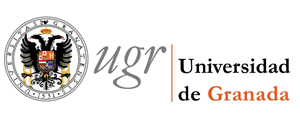














.jpg)
